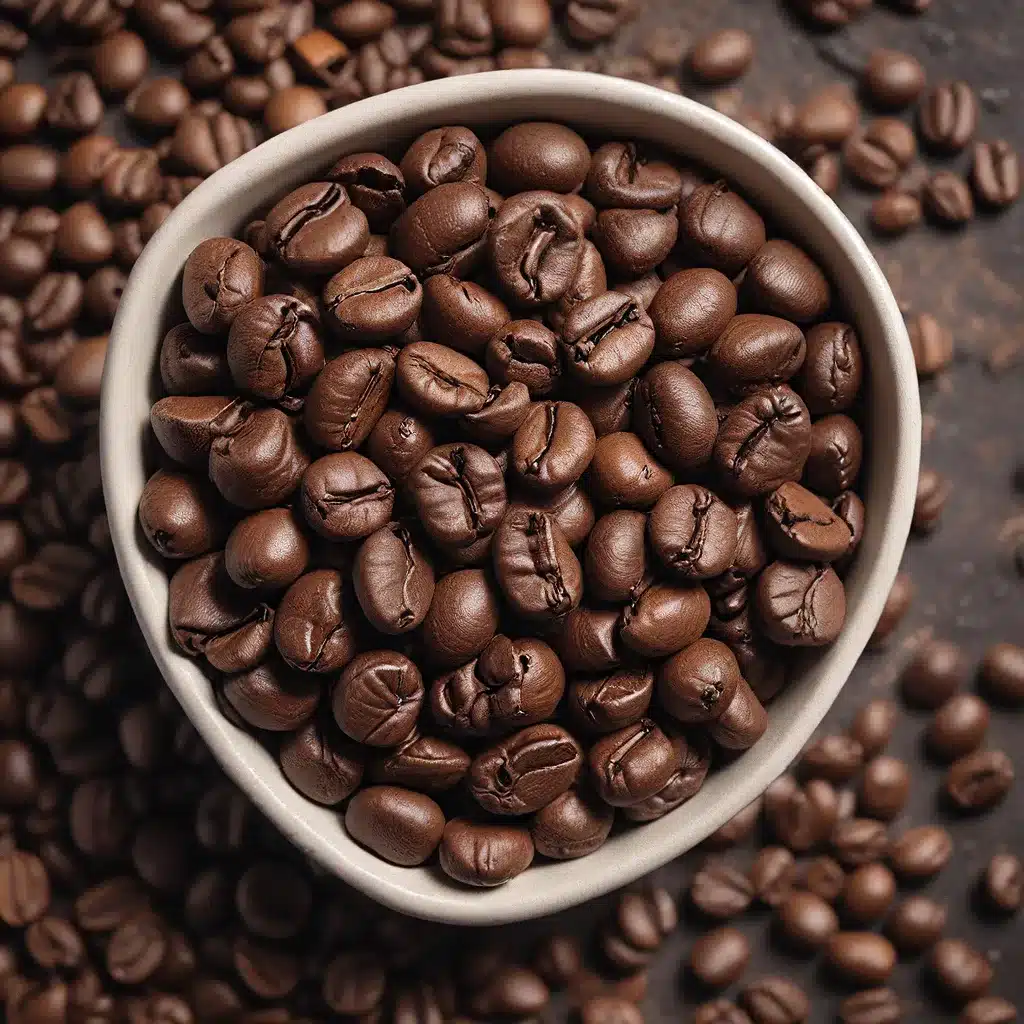
As a devoted coffee enthusiast, I’ve always been intrigued by the behind-the-scenes world of this beloved beverage. But recently, I stumbled upon a fascinating revelation that has completely shifted my perspective – the untapped potential of coffee waste.
It turns out that the very grounds we so casually discard after our daily brew could hold the key to a more sustainable future. That’s right, folks – what we once thought of as mere waste might just be the secret ingredient in unlocking the wonders of the circular economy.
Now, I know what you’re thinking: “Coffee grounds? Circular economy? What on earth is he talking about?” Well, buckle up, because I’m about to take you on a journey that’ll make you rethink everything you thought you knew about that humble cup of joe.
The Surprising Value of Coffee Waste
Let’s start with the basics. Coffee waste is essentially the leftover grounds and chaff (the papery husk that surrounds the coffee bean) that remain after the coffee-making process. For the longest time, these byproducts were simply discarded, destined for landfills or, at best, used as compost.
But as it turns out, coffee waste is anything but worthless. In fact, it’s a veritable treasure trove of untapped potential. Recent studies have shown that coffee waste can be repurposed and transformed into a wide range of valuable products, from biofuels and bioplastics to cosmetics and even construction materials.
And the best part? This isn’t just a theoretical concept – it’s already happening, thanks to the innovative efforts of forward-thinking companies and researchers around the world.
Turning Waste into Renewable Gold
One prime example is the work being done by Neste, a leading provider of renewable solutions. They’ve been using waste and residues, including coffee waste, as raw materials for their renewable products for over a decade.
“We have been using waste and residues as raw materials for our renewable products for over a decade already and have increased their share to more than 90% of our renewable raw material inputs,” explains Diego Marques, Vice President of Feedstock Growth at Neste’s Renewables Platform.
But Neste isn’t the only one tapping into the power of coffee waste. Researchers have found that coffee grounds can be used to create biofuels, bioplastics, and even construction materials, all while reducing our reliance on fossil-based alternatives.
Imagine that – the very thing we’ve been discarding as waste could now be transformed into sustainable, renewable products that can power our vehicles, furnish our homes, and even adorn our personal care items. It’s a true testament to the wonders of circular economy principles.
The Environmental Impact of Coffee Waste Repurposing
But the benefits of repurposing coffee waste go far beyond just creating new products. The environmental impact of this shift is truly staggering.
“Resource efficiency, greater circularity, and reductions in greenhouse gas emissions are only some of the significant benefits of tapping into waste and residues as resources to replace fossil-based products with renewable ones,” as Neste’s Artturi Mikkola, Vice President of Supply for Renewable Products, eloquently puts it.
By turning coffee waste into valuable commodities, we can effectively reduce the amount of waste ending up in landfills and the resulting methane emissions. Moreover, the production of renewable products from coffee waste often has a significantly lower carbon footprint compared to their fossil-based counterparts.
“For example, with Neste MY Renewable Diesel, greenhouse gas (GHG) emissions can be reduced by as much 95% when the product is produced 100% from waste and residue raw materials and the emissions over the fuel’s life cycle are compared with fossil diesel,” Mikkola explains.
The Challenges and Opportunities Ahead
Of course, harnessing the full potential of coffee waste is not without its challenges. Lack of infrastructure, geographic dispersion of waste streams, and varying quality and impurities in the raw materials are just a few of the hurdles that companies and researchers are working to overcome.
But the good news is that the innovation and investment in this space are steadily gaining momentum. As Marques from Neste points out, “What has made it possible for Neste to harness the potential of waste and residues at a large scale is that we made the decision to focus on them very early. We have invested in innovating and developing sophisticated refining technologies as well as pretreatment capabilities to remove impurities from the raw materials while continuously building global sustainable supply chains for sourcing multiple types of waste and residues.”
And the future looks even brighter. Experts estimate that the availability of waste and residue oils and fats suitable for Neste’s technology could grow to around 40 million tons per year by 2030. But as Marques rightly notes, “as the demand for renewable products grows in line with climate ambitions, more is needed.”
Brewing a Sustainable Future with Coffee Waste
So, what does all of this mean for the humble cup of coffee, you ask? Well, the implications are truly far-reaching. By tapping into the power of coffee waste, we’re not just creating a more sustainable future for our beloved beverage – we’re revolutionizing the way we think about waste and unlocking the boundless potential of the circular economy.
Imagine a world where your morning brew not only brings you joy but also contributes to a greener, more eco-friendly future. Where the very grounds that once went to waste now power your car, furnish your home, and even nourish your skin. It’s a future that’s not only possible but one that’s already in the making.
And who knows, maybe one day you’ll be sipping your coffee at Sips Coffee House while knowing that the cup in your hands was made from the very same waste that you so thoughtfully disposed of. Now, that’s what I call a full-circle moment.
So, the next time you’re tempted to toss those coffee grounds in the bin, pause and ponder the possibilities. Because, my friends, the future of sustainability just might be hiding in that humble pile of waste. And who knows what wonders it might unlock if we’re willing to give it a chance.














